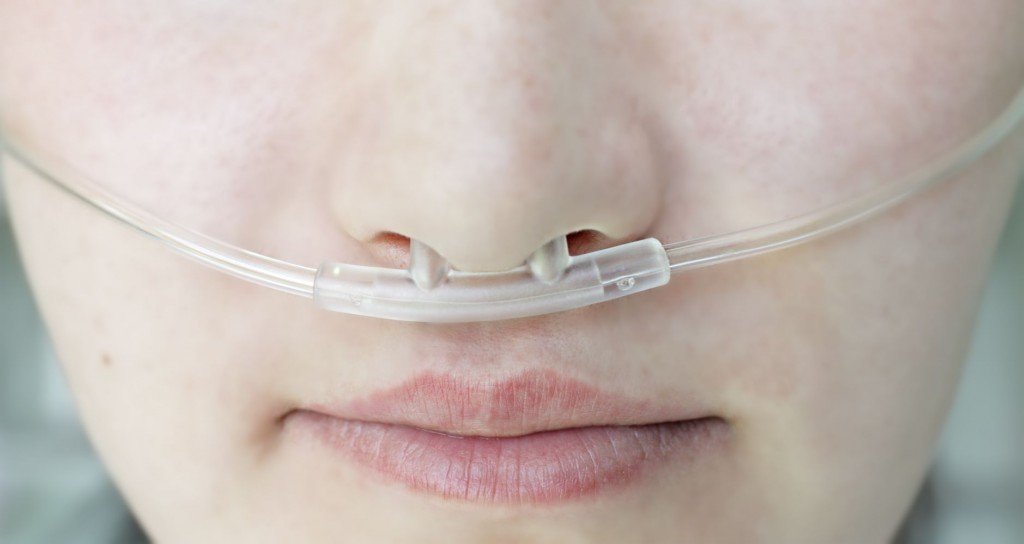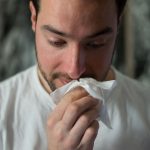Walter J. Crinnion, ND
The rates of allergy, asthma, and autoimmunity have been increasing worldwide for the last few decades. Various theories have been proposed to account for this alarming trend. One of them is the effect of environmental toxicants. Epidemiological research has correlated exposure to multiple environmental chemicals (eg, pesticides, air pollutants, and solvents) with increasing rates of allergy, asthma, and autoimmunity. Studies performed in vitro and in vivo have documented the immune-altering effect of multiple common environmental chemicals. These common compounds lead to a diminished helper T cell type 1 (TH1) and an enhanced helper T cell type 2 (TH2) imbalance.
TH1 and TH2 Balance
Communication in the immune system occurs by chemical messengers that are typically referred to as cytokines or lymphokines. Included among these chemicals are interferon-gamma (IFN-gamma), a number of interleukins, tumor necrosis factor, and a host of other compounds. Helper T cells have begun to be categorized by the cytokine chemicals that they release as either TH1 or TH2. Helper T cells type 1, which produce primarily IFN-gamma and interleukin 2 (IL-2), command the cell-mediated immune functions of combating viral and bacterial pathogens, providing delayed-type hypersensitivity response, and fighting cancer cells (via natural killer cells). Helper T cells type 2 produce higher levels of IL-4 and IL-5, which stimulate the functioning of the humoral immune system. These cytokines not only boost the functioning of either the cellular or humoral immune response but also inhibit their rivals. Interferon-gamma inhibits TH2-associated functions, while IL-4 and IL-10 inhibit TH1-associated functions.1 Helper T cell type 1 dominance is thought to predispose to organ-specific or tissue-specific autoimmunity (eg, arthritis and diabetes mellitus). Helper T cell type 2 dominance appears to lead to increased rates of allergy and systemic autoimmunity (ie, systemic lupus erythematosus [SLE]),2 both of which are commonly seen in persons with chemical overburden.
The classic picture of immunotoxicity is reduced cell-mediated immunity, leading to chronic infections (decreased TH1 function), allergies and asthma (increased TH2 function), and chemical sensitivity and autoimmunity (either overactive TH1 or TH2 function).3 The first manifestation of immunotoxicity often seen in a case history is the development of asthma and allergies. Multiple environmental toxicants are associated with increased incidences of allergic reactivity to the environment and to foods. The chemicals that lead the way in causing atopic reactions include both organophosphate and chlorinated pesticides, solvents, and combustion by-products, including tobacco smoke and diesel exhaust.
Allergies and Indoor Air Pollutants
Environmental tobacco smoke is often thought of as the biggest indoor air pollutant. Combustion by-products from vehicles and cigarettes have been shown to lead to higher rates of allergy and asthma.4 Exposure to cigarette smoke reduces IFN-gamma5 and natural killer cell6 activity, which are TH1 functions. This decrease in TH1 function has been linked to reduced ability to fight respiratory infections, as well as having a role in increased cancer risk. Children exposed to environmental tobacco smoke are also more likely to be plagued by recurrent ear infections than other children without that exposure.7 While tobacco smoke reduces TH1 response, it also enhances TH2 response through greater production of IL-4, IL-5, and other proinflammatory cytokines, leading to increases in allergenicity8 and predisposing to autoimmunity.
Perfluorocarbons
Perfluorooctane sulfonate is the key ingredient of stain-repellent and durable water-repellent products used in fabrics and carpeting. It was found ubiquitously among US residents (mean urinary level, 20.7 mcg/L) in the Centers for Disease Control and Prevention’s Fourth Report.9 All materials in the home that are guarded by stain and water repellents (eg, carpeting, upholstery, and clothing) will release these perfluorooctane sulfonates into the air of the home. Exposing mice to perfluorooctane sulfonate resulted in a reduction of IFN-gamma and IL-2 production, while IL-4 and IL-5 production was increased, tipping the immune system to a TH2 dominance.10 Prenatal exposure to these fluorocarbons resulted in mice being born with higher IgE levels and increased allergic reactivity.11
Plasticizers (Phthalates)
Phthalate compounds are added to plastics to make them more flexible. They are not strongly bound to the plastics and are therefore released into the surrounding environment quite readily. Similar to the stain-repellent and water-repellent compounds in the home, anything containing phthalates (shower curtains, raincoats, toys, polyvinyl chloride flooring, furniture polishes, plastic food wrap, personal care products, fragrances, etc) will release these chemicals into the environment, where they will be picked up by the dust and carried throughout the home.12 Phthalates have been associated with higher rates of allergic and respiratory problems. The presence of benzylbutyl phthalate in house dust is associated with rhinitis and eczema, and di-2-ethylhexyl phthalate is associated with asthma.13 Di-2-ethylhexyl phthalate is in all vinyl chloride products, and benzylbutyl phthalate is in both vinyl tiles and carpet and in some artificial leather products. Phthalates have been shown to induce TH2 immune responses, with increased TH2 cytokine production and increases in IgE and IgG.14
Solvents
Because trichloroethylene (TCE) has contaminated so many groundwater sites, the National Exposure Registry has been tracking adverse health effects for persons exposed to TCE. When Wistar rats were given water containing small amounts of TCE, similar to what homeowners would get by drinking their tap water, they produced increased levels of the TH2 cytokine IL-4 and developed type 1 allergic reactivity.15 The National Exposure Registry has been tracking over 4000 individuals living in homes supplied with TCE-contaminated well water, all being near Superfund sites; as the cumulative exposure level increased, persons exhibited significantly more problems with respiratory allergies, asthma, emphysema, stroke, and hearing impairment.16
Children exposed to indoor solvents (from cleaning supplies, building materials, paints, and environmental tobacco smoke) have an enhanced TH2 immune response and are much more likely to become reactive to milk and egg whites.17 The solvents leading to this proallergic state include toluene, orthoxylene, metaxylene, and paraxylene (xylenes are found in cleaning compounds), as well as ethyltoluene, ethylbenzene, and chlorobenzene.
Allergies and Outdoor Air Pollutants
In 2010, diesel vehicles comprised 70% of all new vehicle sales in France and 50% in the rest of Europe.18 In the United States, the sale of diesel vehicles increased by almost 40% in 2010. While diesel engines used to be mainly found in large trucks, earth-moving equipment, ships, buses, locomotives, and power generators, they are now commonly found in passenger vehicles on every roadway in the world. Diesel exhaust particle (DEP) exposure leads to increased rates of allergic reactivity and asthma, along with elevated production of antigen-specific IgE and histamine. When mice were exposed to ovalbumin after DEP exposure, they produced more IgE than mice who were not exposed to DEP.19 Recognizing the increased use of diesel engines and the increase in atopic response with DEP exposure, it is quite possible that diesel exhaust alone could be a major player in the worldwide increase in asthma.
The mucosal immune response in humans to DEP exposure was observed to see if the increased allergic tendencies found in animals also occurred in humans. In volunteers exposed to DEP, the levels of messenger RNA (mRNA) for cytokine production (IL-4, IL-5, Ill-6, IL-10, and IL-13) were increased after DEP exposure, revealing an elevated TH2 response.20 The researchers also found elevated levels of IL-4 in the nasal lavage fluid after exposure. Exposure to DEP in anther group of human volunteers showed that diesel exhaust directly caused a reduction in IFN-gamma production after exposure.21 Other studies have confirmed the increase in TH2 cytokine production after DEP exposure and have shown that this exposure leads to increased reactivity to ragweed,22 cedar,23 or birch24 pollen and even egg protein.25 Simultaneous exposure to DEP and the allergen will lead to more rapid development of allergic reactivity to foods or airborne allergens than would be seen from allergen exposure without DEP.26 Other researchers demonstrated in an in vitro study27 that DEP leads to a clear suppression of IFN-gamma, thereby reducing TH1 function, while not affecting IL-4 and IL-5; exposure to DEP also reduced TH1 function by inhibiting IFN-gamma mRNA expression and protein production more potently than dexamethasone or cyclosporine A. This reduction of TH1 function and cell-mediated immunity is the likely cause for DEP being associated with respiratory infections.28-31
Autoimmunity From Toxicant Exposures
Twelve persons who were residentially exposed to the organophosphate pesticide chlorpyrifos were checked for immune function from 1 to 4½ years after the exposure occurred.32 These individuals showed far higher risk for developing autoantibodies to important tissues than the rest of the population. The most common autoimmune antibodies found were anti–smooth muscle, affecting primarily the liver (odds ratio, 3.99), and anti–parietal cell, leading to diminished hydrochloric acid production (odds ratio, 9.7), as well as antithyroid and antimyelin antibodies.
Four groups of patients with long-term formaldehyde exposure showed similar autoantibody production.33 The 4 groups comprised mobile home dwellers, office workers in closed buildings, persons who had been removed from their formaldehyde exposure for 1 year, and individuals with occupational exposure. Mobile home dwellers had a risk for anti–parietal cell antibodies that was 144-fold higher than that of non–mobile home dwellers. Office workers were 40.5-fold more likely to have anti–parietal cell antibodies. Levels of anti–smooth muscle, antimitochondrial antibodies, and anti–brush border were also higher in those with formaldehyde exposure. A previous study34 of 8 persons with chronic low-level formaldehyde exposure showed a reduction in cell-mediated immunity, as would be found with TH1 reduction.
A study35 of 298 persons working with chemicals in the computer manufacturing industry showed more problems with reduced cellular immunity and increased autoimmune markers compared with control subjects. The most commonly found autoantibody was against myelin basic protein, which correlated with their self-reporting of headaches, mental status changes, and peripheral neuropathies.
Systemic lupus erythematosus has long been associated with numerous pharmaceutical compounds,36 so its association with environmental chemicals should not be a surprise. The rates of SLE in the US population vary from 14.6 to 50.8 cases per 100 000.37 African Americans generally show higher prevalences of 53 cases per 100 000 men and 168 cases per 100 000 women; however, in the neighborhood of Newton, in Gainesville, Georgia, where homes are close to local industry, the rates of SLE are far higher.38 The SLE rate among this African American community is 1000 cases per 100 000 persons, a 6-fold elevation over national statistics. Other chemicals can lead to higher SLE rates. Regular, repeated exposures to hair dye have also been associated with increased rates of SLE.39,40 Persons exposed to TCE contamination in city drinking water also had higher rates of SLE,41 as do persons who smoke. Being an active smoker increased the risk for developing SLE to 6.69; the risk of developing SLE was even elevated for those who quit, with a 3.62 risk.42
Conclusion
Multiple commonly encountered xenobiotic toxicants have been clearly associated with an increased risk of allergy, asthma, and autoimmunity. The underlying mechanism for these immunological problems appears to be directly related to a TH1-TH2 imbalance that is a direct result of toxicant presence. These imbalances lead to decreased cell-mediated immunity and natural killer cell function, as well as increased allergic reactivity and systemic autoimmunity. The toxicants responsible for these imbalances are found in our everyday air and food, and those living in an urban area, close to roadways with high traffic and high diesel exhaust, are most at risk. Educating our patients about these common risks and providing options to help them reduce their exposures will accomplish both prevention and “physician as teacher,” aiding our patients in avoiding chronic health problems.
 Walter J. Crinnion, ND has been in practice since 1982 with a special focus on treating chronic diseases that are caused by environmental toxic burden. He conducts post-graduate seminars in environmental medicine and is currently a professor at the Southwest College of Naturopathic Medicine where he is also the chair of Environmental Medicine. He is the author of Clean, Green and Lean (Wiley, pub.).
Walter J. Crinnion, ND has been in practice since 1982 with a special focus on treating chronic diseases that are caused by environmental toxic burden. He conducts post-graduate seminars in environmental medicine and is currently a professor at the Southwest College of Naturopathic Medicine where he is also the chair of Environmental Medicine. He is the author of Clean, Green and Lean (Wiley, pub.).
References
- Mosmann TR, Li L, Sad S. Functions of CD8 T-cell subsets secreting different cytokine patterns. Semin Immunol. 1997;9(2):87-92.
- Kidd P. Th1/Th2 balance: the hypothesis, its limitations, and implications for health and disease. Altern Med Rev. 2003;8(5):223-246.
- Rea WJ. Chemical Sensitivities. Vol 1. Boca Raton, FL: CRC Press; 1992.
- Gilmour MI, Jaakkola MS, London SJ, Nel AE, Rogers CA. How exposure to environmental tobacco smoke, outdoor air pollutants, and increased pollen burdens influence the incidence of asthma. Environ Health Perspect. 2006;114(4):627-633.
- Feng Y, Kong Y, Barnes PF, et al. Exposure to cigarette smoke inhibits the pulmonary T-cell response to influenza virus and Mycobacterium tuberculosis. Infect Immun. 2011;79(1):229-237.
- Hogan AE, Corrigan MA, O’Reilly V, et al. Cigarette smoke alters the invariant natural killer T cell function and may inhibit anti-tumor responses. Clin Immunol. 2011;140(3):229-235.
- Lieu JE, Feinstein AR. Effect of gestational and passive smoke exposure on ear infections in children. Arch Pediatr Adolesc Med. 2002;156(2):147-154.
- Singh SP, Mishra NC, Rir-Sima-Ah J, et al. Maternal exposure to secondhand cigarette smoke primes the lung for induction of phosphodiesterase-4D5 isozyme and exacerbated Th2 responses: rolipram attenuates the airway hyperreactivity and muscarinic receptor expression but not lung inflammation and atopy. J Immunol. 2009;183(3):2115-2121.
- Centers for Disease Control and Prevention. Fourth Report, 2009. http://www.cdc.gov/exposurereport/. Accessed January 9, 2012.
- Zheng L, Dong GH, Zhang YH, Liang ZF, Jun YH, He QC. Type 1 and type 2 cytokines imbalance in adult male C57BL/6 mice following a 7-day oral exposure to perfluorooctanesulfonate (PFOS). J Immunotoxicol. 2011;8(1):30-38.
- Wang IJ, Hsieh WS, Chen CY, et al. The effect of prenatal perfluorinated chemicals exposures on pediatric atopy. Environ Res. 2011;111(6):785-791.
- Crinnion WJ. Toxic effects of the easily avoidable phthalates and parabens. Altern Med Rev. 2010;15(3):190-196.
- Bornehag CG, Sundell J, Weschler CJ, et al. The association between asthma and allergic symptoms in children and phthalates in house dust: a nested case-control study. Environ Health Perspect. 2004;112:1393-1397.
- Bornehag CG, Nanberg E. Phthalate exposure and asthma in children. Int J Androl. 2009;33:1-13.
- Seo M, Yamagiwa T, Kobayashi R, et al. Augmentation of antigen-stimulated allergic responses by a small amount of trichloroethylene ingestion from drinking water. Regul Toxicol Pharmacol. 2008;52(2):140-146.
- Burg JR, Gist GL. Health effects of environmental contaminant exposure: an intrafile comparison of the Trichloroethylene Subregistry. Arch Environ Health. 1999;54(4):231-241.
- Lehmann I, Rehwagen M, Diez U, et al; Leipzig Allergy Risk Children Study. Enhanced in vivo IgE production and T cell polarization toward the type 2 phenotype in association with indoor exposure to VOC: results of the LARS study. Int J Hyg Environ Health. 2001;204(4):211-221.
- Yahoo! Autos. Diesel: overview. http://autos.yahoo.com/green_center-article_110/. Accessed January 2, 2012.
- Takafuji S, Suzuki S, Koizumi K, et al. Diesel-exhaust particulates inoculated by the intranasal route have an adjunctive activity for IgE production in mice. J Allergy Clin Immunol. 1987;79:639-645.
- Diaz-Sanchez D, Tsien A, Casillas A, Dotson AR, Saxon A. Enhanced nasal cytokine production in human beings after an in vivo challenge with diesel exhaust particles. J Allergy Clin Immunol. 1996;98:114-123.
- Sasaki Y, Ohtani T, Ito Y, et al. Molecular events in human T cells treated with diesel exhaust particles or formaldehyde that underlie their diminished interferon-gamma and interleukin-10 production. Int Arch Allergy Immunol. 2009;148(3):239-250.
- Diaz-Sanchez D, Tsien A, Fleming J, Saxon A. Combined diesel exhaust particulate and ragweed allergen challenge markedly enhances human in vivo nasal ragweed-specific IgE and skews cytokine production to a T helper cell 2-type pattern. J Immunol. 1997;158(5):2406-2413.
- Maejima K, Tamura K, Nakajima T, Taniguchi Y, Saito S, Takenaka H. Effects of the inhalation of diesel exhaust, Kanto loam dust, or diesel exhaust without particles on immune responses in mice exposed to Japanese cedar (Cryptomeria japonica) pollen. Inhal Toxicol. 2001;13(11):1047-1063.
- Lubitz S, Schober W, Pusch G, et al. Polycyclic aromatic hydrocarbons from diesel emissions exert proallergic effects in birch pollen allergic individuals through enhanced mediator release from basophils. Environ Toxicol. 2010;25(2):188-197.
- Nilsen A, Hagemann R, Eide I. The adjuvant activity of diesel exhaust particles and carbon black on systemic IgE production to ovalbumin in mice after intranasal instillation. Toxicology. 1997;124(3):225-232.
- Nel AE, Diaz-Sanchez D, Ng D, Hiura T, Saxon A. Enhancement of allergic inflammation by the interaction between diesel exhaust particles and the immune system. J Allergy Clin Immunol. 1998;102(4, pt 1):539-554.
- Ohtani T, Nakagawa S, Kurosawa M, Mizuashi M, Ozawa M, Alba S. Cellular basis of the role of diesel exhaust particles in inducing Th-2 dominant response. J Immunol. 2005;174(4):2412-2419.
- Castranova V, Ma JY, Yang HM, et al. Effect of exposure to diesel exhaust particles on the susceptibility of the lung to infection. Environ Health Perspect. 2001;109(suppl 4):609-612.
- Yin XJ, Dong CC, Ma JY, et al. Sustained effect of inhaled diesel exhaust particles on T-lymphocyte–mediated immune responses against Listeria monocytogenes. Toxicol Sci. 2005;88(1):73-81.
- Takano H, Yanagisawa R, Inoue K. Components of diesel exhaust particles diversely enhance a variety of respiratory diseases related to infection or allergy: extracted organic chemicals and the residual particles after extraction differently affect respiratory diseases. J Clin Biochem Nutr. 2007;40(2):101-107.
- Yang HM, Antonini JM, Barger MW, et al. Diesel exhaust particles suppress macrophage function and slow the pulmonary clearance of Listeria monocytogenes in rats. Environ Health Perspect. 2001;109(5):515-521.
- Thrasher JD, Madison R, Broughton A. Immunologic abnormalities in humans exposed to chlorpyrifos: preliminary observations. Arch Environ Health. 1993;48(2):89-93.
- Thrasher JD, Broughton A, Madison R. Immune activation and autoantibodies in humans with long-term inhalation exposure to formaldehyde. Arch Environ Health. 1990;45(4):217-223.
- Thrasher JD, Vojdani A, Cheung G, Heuser G. Evidence for formaldehyde antibodies and altered cellular immunity in subjects exposed to formaldehyde in mobile home. Arch Environ Health. 1987;42(6):347-351.
- Vojdani A, Ghoneum M, Brautbar N. Immune alteration associated with exposure to toxic chemicals. Toxicol Ind Health. 1992;8(5):239-254.
- Skaer TL. Medication-induced systemic lupus erythematosus. Clin Ther. 1992;14(4):496-506.
- Lawrence RC, Helmick CG, Arnett FC, et al. Estimates of the prevalence of arthritis and selected musculoskeletal disorders in the United States. Arthritis Rheum. 1998;41:778-799.
- Kardestuncer T, Frumkin H. Systemic lupus erythematosus in relation to environmental pollution: an investigation in an African-American community in North Georgia. Arch Environ Health. 1997;52(2):85-90.
- Freni-Titulaer L, Kelley D, Grow A, McKinley T, Arnett F, Hochberg M. Connective tissue disease in southeastern Georgia: a case control study of etiologic factors. Am J Epidemiol. 1989;130:404-409.
- Cooper G, Dooley M, Treadwell E, St Clair E, Gilkeson G. Smoking and use of hair treatments in relation to risk of developing systemic lupus erythematosus. J Rheumatol. 2001;28(12):2653-2656.
- Kilburn KH, Warshaw RH. Prevalence of symptoms of systemic lupus erythematosus (SLE) and of fluorescent antinuclear antibodies associated with chronic exposure to trichloroethylene and other chemicals in well water. Environ Res. 1992;57(1):1-9.
- Ghaussy NO, Sibbitt WL Jr, Qualls CR. Cigarette smoking, alcohol consumption, and the risk of systemic lupus erythematosus: a case-control study. J Rheumatol. 2001;28(11):2449-2453.





